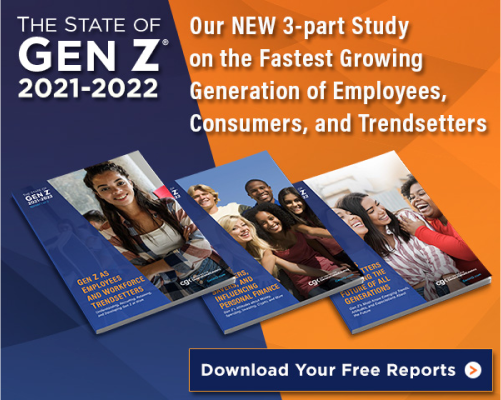It is generally accepted that productivity is good and wasting time is bad. Identifying goals, outlining the path to achieving those goals, and doing the work to accomplish them is what keeps millions of professionals going from 8-5 every day. From bankers to engineers to teachers to actors, getting things done is undeniably important. Despite this understanding, chances are you have experienced frustration with others who don’t see eye-to-eye with you on the best method for productivity. While most people agree that productivity is important, diverse personalities, work styles and ages account for a wide difference in opinion about what “getting things done” should look like.

The 25-year-old works with music in his earbuds, peeks at social media a few times per hour, responds to personal texts the minute they come in and takes five trips to the coffee counter each day. The 38-year-old is working hard to build her career. She is digitally connected at all times so she can be responsive to her boss and colleagues no matter the time of day, but she is spread thin between work and the extreme busyness of family life. The 60-year-old who is nearing the end of her career comes in early, has never migrated to a laptop and doesn’t use all the features on her smartphone. She has tremendous wisdom, but is viewed by many as “out of touch.” She is left out of impromptu social gatherings because she always says no and prefers working things out over the phone (often with someone who would prefer working it out over e-mail).
Stereotypes never describe everyone, but looking at these employee snapshots tells us that they aren’t necessarily going to agree on how to run a meeting, let alone what productivity should look like on a daily basis. To be fair, the 25-year-old is often highly productive in spite of time spent on various distractions. There are things the Baby Boomer boss can do to help get the most out of her Millennial new hire while maintaining genuine and mutual respect.
While Millennials are asking the whys behind a given task, the Baby Boomer manager gets increasingly frustrated with an apparent lack of trust and compliance in the workplace. Age does not have to be a barrier to having efficient, multigenerational teams. Questions drive clearer goals and quick turnarounds on allocated tasks drive business results. Why not have both?
A first step towards mutual agreement in efficiency is to set the stage for successful meetings. If you have a culture that is saturated with unnecessary meetings, try to influence or give feedback based on the following ideas:
- Set expectations. If you are running the meeting, always start on time even if someone is late. Eventually, everyone will learn that you start your meetings on time. If you have an employee who is multi-tasking on his computer or distracted by his phone and that becomes an issue, don’t be afraid to set the tone. Let the team know you will keep the meetings as short as possible and ask for no electronic interruptions or distractions.
- Start them off on the right foot. If you are leading or chairing the meeting, be clear about what you want to accomplish. The clearer your vision or mission for the time, the more likely you are to achieve it. At our office we say that you don’t have to attend a meeting if no agenda with a clear objective was sent ahead of time.
- Hold fewer meetings. Many meetings are unnecessary. Eliminate the unproductive ones from your calendar. Consider who is invited to the meeting. Sometimes entire departments are in a meeting when the topic only pertains to a handful of people.
- Set shorter agendas. Meetings tend to fill available time. If you set aside an hour to go over a new initiative, it’s likely to take at least that long. On the other hand, if you make it clear that you only expect things to go on for 45 minutes, or even 15 minutes, there’s a much greater chance you will get to the point faster.
- Schedule them back-to-back. By having another meeting to go to, you give yourself (and others) a deadline to wrap things up.
- Go public. Coffee shops and other public locales can make for great places to meet because you’re less likely to be interrupted by your staff, the office phone, or other distractions you might have in your workspace. Just be sure the time you spend getting away doesn’t outweigh the minutes saved.
Another unifying action you could implement is the Power Hour. In the Horsager Leadership offices and many others, having a Power Hour has been a great way to keep focused on what is most important. It’s so simple that you might be surprised with how well it works.
For sixty minutes each morning, we don’t hold meetings, phone calls, or e-mails. We don’t take any interruptions. Messages go to voicemail and the inbox fills. Some would ask, “You mean you won’t take a call from a client to serve them?” We do it so that we can serve our clients better. We find that we can really focus, concentrate and serve others best by actually getting something done for them. Across all personalities, work styles and ages, we are unified in this Power Hour of ultimate productivity!
Here’s how to make it work for you:
- Go public. Let everyone you work with know you are setting aside an hour a day. Informing assistants, customers and colleagues of your plans will leave them less likely to disturb you.
- Share the idea. In my office, everyone gets a quiet hour. That way, we don’t interrupt each other and we all get more done.
- Be consistent. Use the same time every day for your quiet hour if possible. It will allow people who work with you to get used to your routine and help reinforce the habit in your mind.
Try this method for a while and I guarantee you will be surprised at how much you can accomplish in just sixty minutes. Not only will you make headway on your biggest projects, but you will also find that by getting the day off to a strong start, you might feel energized to accomplish more in your remaining time.
Recognize that generational diversity is inevitable and necessary for thriving businesses and teams. Without shared wisdom, ideas and questions, progress and teams are stunted. Effective collaboration and productivity occurs when the best aspects of differing generational methods are reaped and sowed into a new, more productive structure.
David Horsager, MA, CSP, is a business strategist, keynote speaker and author of the National Bestseller, The Trust Edge and brand new book The Daily Edge. His work has been featured in prominent publications such as Fast Company, Forbes, and The Wall Street Journal. David has worked to develop trusted leaders and organizations on five continents, with clients ranging everywhere from Wells Fargo and the New York Yankees to Goodyear and the Department of Homeland Security. Get free resources and more at www.TrustEdge.com.
If you enjoyed Horsager’s guest column, make sure to check out his book, The Daily Edge: Simple Strategies to Increase Efficiency and Make an Impact Every Day.
